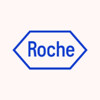A Study of Subcutaneous (sc) Mircera in Dialysis Patients With Chronic Renal Anemia.
Anemia

About this trial
This is an interventional treatment trial for Anemia
Eligibility Criteria
Inclusion Criteria: adult patients >=18 years of age; chronic renal anemia; on dialysis (hemodialysis or peritoneal dialysis) therapy for at least 3 months; receiving sc epoetin alfa or beta for at least 3 months prior to the run-in period. Exclusion Criteria: women who are pregnant, breastfeeding or using unreliable birth control methods; use of any investigational drug within 30 days preceding the run-in phase, or during the run-in or study treatment period.
Sites / Locations
Arms of the Study
Arm 1
Arm 2
Arm 3
Arm 4
Arm 5
Arm 6
Arm 7
Arm 8
Arm 9
Experimental
Experimental
Experimental
Experimental
Experimental
Experimental
Experimental
Experimental
Experimental
Cohort A (0.4/150, 1x/ Week)
Cohort B (0.4/150, 1x/ 3 Weeks)
Cohort C (0.4/150, 1x/ 4 Weeks)
Cohort D (0.8/150, 1x/ Week)
Cohort E (0.8/150, 1x/ 3 Weeks)
Cohort F (0.8/150, 1x/ 4 Weeks)
Cohort G (1.2/150, 1x/ Week)
Cohort H (1.2/150, 1x/ 3 Weeks)
Cohort I (1.2/150, 1x/ 4 Weeks)
Eligible participant will be administered RO0503821 (methoxy polyethylene glycol-epoetin beta [Mircera]) SC using a dose conversion factor of 0.4/150 microgram (mcg)/ kilogram (kg) of the previous weekly erythropoiesis stimulating agents (ESA) dose, (equal to 50% assumed equi-effective dose) once weekly up to 19 weeks. After 19 weeks of core treatment period, participants will be followed-up for two optional treatment extension periods (54 weeks each).
Eligible participant will be administered RO0503821 SC using a dose conversion factor of 0.4/150 mcg/kg of the previous weekly ESA dose, (equal to 50% assumed equi-effective dose) once every three weeks up to 19 weeks. After 19 weeks of core treatment period, participants will be followed-up for two optional treatment extension periods (54 weeks each).
Eligible participant will be administered RO0503821 SC using a dose conversion factor of 0.4/150 mcg/kg of the previous weekly ESA dose, (equal to 50% assumed equi-effective dose) once every four weeks up to 21 weeks. After 21 weeks of core treatment period, participants will be followed-up for two optional treatment extension periods (54 weeks each).
Eligible participant will be administered RO0503821 SC using a dose conversion factor of 0.8/150 mcg/kg of the previous weekly ESA dose, (equal to 100% assumed equi-effective dose) once weekly up to 19 weeks. After 19 weeks of core treatment period, participants will be followed-up for two optional treatment extension periods (54 weeks each).
Eligible participant will be administered RO0503821 SC using a dose conversion factor of 0.8/150 mcg/kg of the previous weekly ESA dose, (equal to 100% assumed equi-effective dose) once every three weeks up to 19 weeks. After 19 weeks of core treatment period, participants will be followed-up for two optional treatment extension periods (54 weeks each).
Eligible participant will be administered RO0503821 SC using a dose conversion factor of 0.8/150 mcg/kg of the previous weekly ESA dose, (equal to 100% assumed equi-effective dose) once every four weeks up to 21 weeks. After 21 weeks of core treatment period, participants will be followed-up for two optional treatment extension periods (54 weeks each).
Eligible participant will be administered RO0503821 SC using a dose conversion factor of 1.2/150 mcg/kg of the previous weekly ESA dose, (equal to 150% assumed equi-effective dose) once weekly up to 19 weeks. After 19 weeks of core treatment period, participants will be followed-up for two optional treatment extension periods (54 weeks each).
Eligible participant will be administered RO0503821 SC using a dose conversion factor of 1.2/150 mcg/kg of the previous weekly ESA dose, (equal to 150% assumed equi-effective dose) once every three weeks up to 19 weeks. After 19 weeks of core treatment period, participants will be followed-up for two optional treatment extension periods (54 weeks each).
Eligible participant will be administered RO0503821 SC using a dose conversion factor of 1.2/150 mcg/kg of the previous weekly ESA dose, (equal to 150% assumed equi-effective dose) once every four weeks up to 21 weeks. After 21 weeks of core treatment period, participants will be followed-up for two optional treatment extension periods (54 weeks each).
Outcomes
Primary Outcome Measures
Secondary Outcome Measures
Full Information
1. Study Identification
2. Study Status
3. Sponsor/Collaborators
4. Oversight
5. Study Description
6. Conditions and Keywords
7. Study Design
8. Arms, Groups, and Interventions
10. Eligibility
12. IPD Sharing Statement
Learn more about this trial
